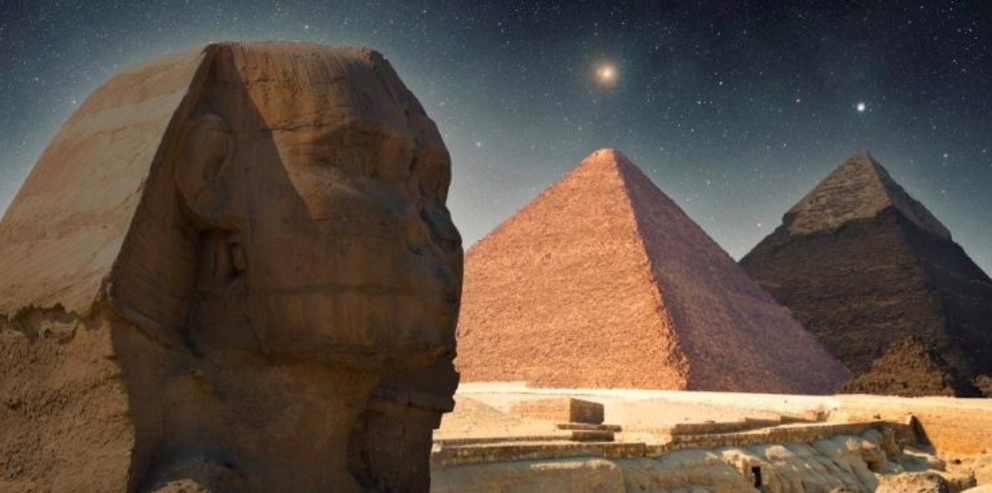The missing blueprints of the pyramids
Except for 4,500 years, the pyramids have concealed one mystery above all others: how they were built, and so the question remains how they were constructed. Except for one crucial detail, we'd understand everything about the pyramids--the plans aren't present, thus we are left with many unanswered questions. Except for the single aspect that is absent--the blueprints--we'd understand everything about the pyramids, therefore the absence of blueprints is a significant obstacle. Except for the absence of any designs, the enigma of the pyramids would be resolved, but for the lack of information, the mystery persists.
The pyramids of Egypt are more than 4,500 years old, and they are the largest stone structures on the planet. However, there is one curious fact, and we have never found any plans for them, no blueprints, drawings, or documents, neither for the first nor for the Great Pyramid. Ancient Egyptians wrote a lot, and they wrote about taxes, food, stars, and labor, because they were meticulous record-keepers. They didn’t need paper plans, and they used measures, tools, the work place to plan, thus they didn’t need papyrus, which was expensive and fragile, and it wasn’t useful for plans, so they likely drew on plaster boards, sand, wood, which doesn’t survive, and we get other stuff.
Why did they not document how to build pyramids, maybe they had different thoughts about plans, and they didn’t need complicated documents, because they had a different approach to construction. How to build without plans, and papyrus was expensive and fragile, it wasn’t useful for plans, so they likely drew on plaster boards, sand, wood, which doesn’t survive, and we get other stuff, therefore we have to look at the construction process in a different way. We see traces of courses incised in the rock, and we see grids drawn on walls, and we see small models, because the architect and builder were one and the same, and the contractor stood on site, and he instructed surveyors and masons, who laid out the form directly in the stone, and they measured with the royal cubit, which was around 52 cm.
They split it into palms and digits, and we have cubit rods, which prove that the measurements were unchanged over centuries, because the pyramid was the design, and they applied mathematics, empiricism, and the terrain to achieve this, thus what we discover at Giza, people excavate around the Giza plateau, and they uncover worker villages, tool stores, and markings on the stone, which shows that the Great Pyramid is extremely accurate, and its base is aligned to true north, and it is less than a single degree out. They didn’t even need complicated instruments to be this accurate, because they had simple instruments, and they had the merkhet and plumb bobs, and they observed stars such as Kochab and Mizar in about 2500 BC, which allowed them to determine north and south, and then they could use ropes to mark the base on the ground, and experiments confirm that this is very effective, and it doesn’t shift much.
No drawings, but many logistical issues, and we have a single diary from the period, which is the Diary of Merer, discovered in 2013, and it is an ancient Egyptian logbook that dates from the time of Khufu, and the papyrus is written in the form of a logbook, and it chronicles the daily events of Merer and his crew, because a team of Egyptian workmen, including Merer, who were suppsoedly involved in the construction of the Great Pyramid of Giza, transported limestone via the river from Tura to Giza. This document discusses the logistics aspect of the pyramid construction, and the diary does not mention any administrative issues relating to design or planning, because several other Old Kingdom documents describe expeditions, deliveries, provisions, and rituals, but no architectural plans or studies have been found, which were likely ephemeral documents on papyrus, which could be recycled once the building was complete.
They didn’t preserve “plans”, because they transmitted knowledge from teacher to apprentice, and they worked with proportions, angles, and experience, thus learn by doing, and we know they made errors in the pyramids, because Meidum collapsed, probably, and the Bent Pyramid alters its angle halfway through. But they corrected as they built, and by Khufu, they had mastered the chambers, the relieving chambers, and the transportation of blocks, because experiments today prove this, and with sledges, levers, ropes, copper tools, and cooperation, small teams can position large blocks. Therefore you might not need plans, but you need good surveying, bosses, and trained workers, and see inside the stone, because now we can look inside the pyramids, and we do not need to dig, and the ScanPyramids project uses muons and infrared to see inside, and in 2017, it found a big hole above the Grand Gallery, and at first, people said it was a “hidden chamber”, but it is probably a gap in the structure, because we have not found plans or tools, and it shows that the plan is in the shape itself.
What we do have, is that not having plans does not mean the Egyptians were not smart, because they were very smart, and they stored information in heads, procedures, and hierarchies. They didn’t store it on paper, because construction was about establishing cosmic order, maat, and it wasn’t about archiving documents for posterity, and when the pyramid was complete, they swept up, and the design they left behind is the stone, because everything we know from studying, surveying, and excavating confirms this. They didn’t have blueprints like we do, and there is no gap, because they designed using mathematics, convention, and craftsmanship. Want to know what their plans are, look at the stones, because every angle, every joint, every line is part of a silent plan, and it is intended to be permanent, thus we can learn from their approach to construction.

